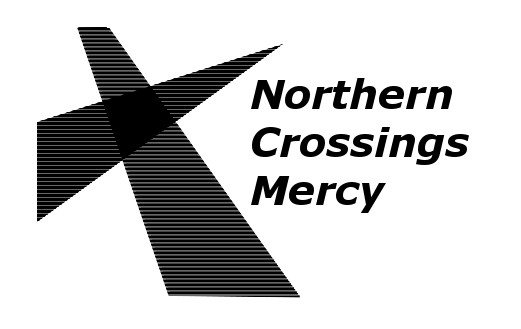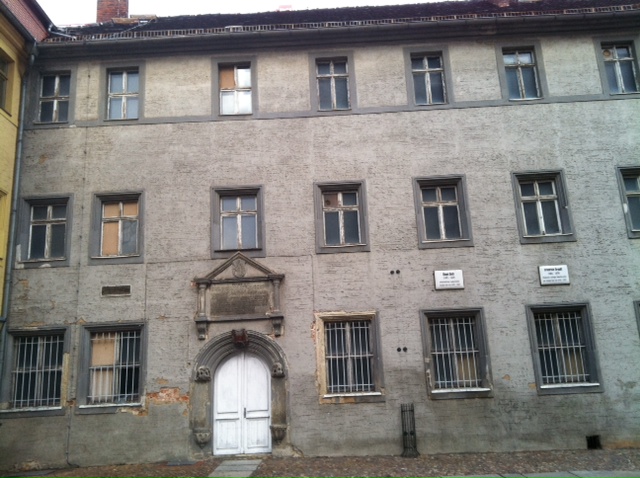We explained way back that this blog came into being so that we could see the connections, the partnerships and the opportunities that we have up here in the North Country to witness, do mercy, and how our life together intersects. Those connections happen in our communities, our Districts and around the world. Someday I am going to write out the list of ways that North Dakotans and Minnesotans are out in the world doing witness and mercy work of which we may never be aware.
I talked this morning to President Fondow who has just returned from a trip to Germany. He was invited to go by Lutheran Hour Ministries and the Government of the province of Thuringia. That’s all I know about Thuringia except that they make some great sausage. On his trip he had a tour guide with a “Von” in her name which means that somewhere, sometime on her past her family was considered some kind of royalty. As they traveled she discussed her “faith” or lack of same at some length with Fondow. She told him that she would be planning to go to church on Christmas eve and Fondow asked her if she were a “Chreaster”. She wondered that was and he said, “you only go to church on Christmas and Easter”. She somewhat sheepishly admitted that was the case as it is for the majority of people who go to church at all in most of Germany.
That is the way it is in much of Europe but especially in the areas of the former Soviet block and occupied countries. Areas that were behind the Iron Curtain are very pagan and areas that weren’t aren’t much better. When I was in Eisleben, where Luther was born and died, I had to find a Rector at 9 am on a Sunday morning to get into the church where he was baptized. There were no services being held there and I was told that they have church on “special occasions”. There are a lot of reasons for this un and anti Christian bias that can be studied but I believe that the main reason that “Lutherland”, as the tourguides like to call it, is essentially pagan, is because over the centuries the Germans forgot what it means to be a Lutheran. Once Governments got involved in running the churches the de-Christianization of much of Europe was underway. Wittenberg, where Luther spent most of his life and where, as Matthew Harrison says, he “preached the Reformation into existence” is covered in some areas with anti-Lutheran and anti-Christian graffiti. Obscene graffiti is on conspicuous areas of the castle church where Luther nailed the 95 theses. One graffitum that I read was numbered “Thesis 6” and loosely translated read “eliminate the Luther Cult” and I was informed that the word used was the same one the Nazi’s used to get rid of the “Jewish problem” as they called it. That is pretty frightening stuff. To live in that atmosphere everyday and have your faith life looked upon as an expediency is pretty debilitating.
Anyway this young lady and Fondow had conversations about faith and witness and the sacrifice of Christ. Towards the end of the tour they were visiting St. Mary’s Church where Luther preached everyday of his life in Wittenberg and Fondow explained to her that “we”, the Lutheran Church Missouri Synod, had purchased the old Latin School next door and were going to do something with it to witness to Christ and true Lutheranism along with our partner church in Germany, the Selbständige Evangelisch-Lutherische Kirche, who also joined up with confessional Lutherans who had lived behind the Iron Curtain and who like to call themselves the “old Lutherans”. This church is the church that stayed behind when the Fathers of the Missouri Synod left Germany and came to America rather than be a part of the “union church”. It is a marvelous story and someday we might have to tell more of it, but now back to this story… When our tour guide saw the Old Latin School, which is literally a stones throw away from St. Mary’s Church she said, “you must do something here. You must fix that building and have a strong Lutheran presence. This is perfect”.
Our tour guide when seeing this building had the same feeling that leaders in the LCMS had back in 2005. This would be the perfect spot for a true Lutheran presence in the heart of Lutherland. At the time the building was purchased in 2006 the idea for its use was, a preaching station, visitors’ center, information center, and diakonic office. Since then there have been all kinds of proposals and all kinds of ideas but the quincentenary of the Reformation is approaching, and the “Luther Decade” has already begun. We need to do something now. The proposal is that this building become an international educational center for the ILC churches and for other church bodies interested in ILC Lutheranism. Wikipedia says that “ILC is the International Lutheran Council is a worldwide association of confessional Lutheran denominations. It is to be distinguished from the larger Lutheran World Federation, which is an association of the more theologically moderate to liberal Lutheran churches, all of which are in full communion with each other as a condition of membership. Unlike the LWF, the member church bodies of the ILC are not required to be in church-fellowship with each other, though many of them are.”
So that will be our “witness in Wittenberg”. But Rev. Fondow found out that he had made a witness as well. As he was preparing to depart the young tour guide told him that she would be looking for a church. She said that spending the time that she had with Fondow and his entourage had shown her how they cared for one another and how important their faith was to their life. Not bad.


